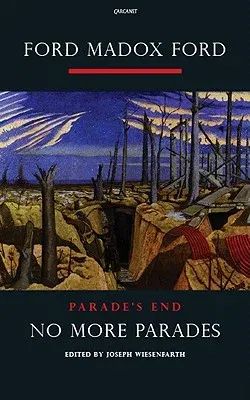Ford Madox Ford
(Author)No More Parades, 2 (Revised)Paperback - Revised, 1 February 2011

Qty
1
Turbo
Ships in 2 - 3 days
In Stock
Free Delivery
Cash on Delivery
15 Days
Free Returns
Secure Checkout

Part of Series
Parade's End
Print Length
432 pages
Language
English
Publisher
Carcanet Press
Date Published
1 Feb 2011
ISBN-10
1847770134
ISBN-13
9781847770134
Description
Product Details
Author:
Book Edition:
Revised
Book Format:
Paperback
Country of Origin:
US
Date Published:
1 February 2011
Dimensions:
21.34 x
13.46 x
2.79 cm
Genre:
1900-1949
ISBN-10:
1847770134
ISBN-13:
9781847770134
Language:
English
Pages:
432
Publisher:
Series:
Weight:
430.91 gm